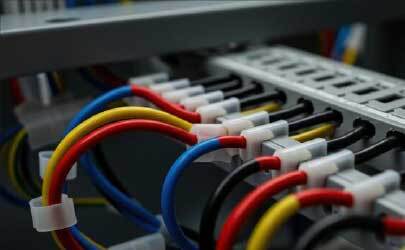From Data Centers to Solar Farms: Where the U.S. Wire and Cable Management Market is Heading Next

The U.S. wire and cable management market exhibits a diverse landscape shaped by industrial and technological advancements across various sectors. Power distribution, commanding the largest market share at 25 percent, remains foundational due to ongoing upgrades to transmission infrastructure, substation expansions, and renewable grid integration projects. The increasing shift toward electrification, particularly in distributed energy systems and microgrids, has heightened the demand for advanced cable routing and protective management systems to ensure reliability and safety under high loads.
Data communication, holding an 18 percent share, has emerged as one of the fastest-growing segments, driven by the rapid expansion of hyperscale data centers, fiber network infrastructure, and the rollout of 5G technologies. As bandwidth demand surges, structured cabling solutions and high-density tray systems have become essential for maintaining operational efficiency. The industrial automation sector, accounting for 16 percent, is experiencing growth as manufacturers adopt robotics, sensors, and control systems that necessitate precise cable organization and protection in dynamic environments.
The building and construction segment, representing 14 percent, is influenced by the adoption of modular and concealed cabling systems in commercial and institutional projects, aimed at enhancing both aesthetics and energy efficiency. The energy and utility applications segment, contributing 12 percent, benefits from renewable energy initiatives, particularly in solar and wind projects, which require corrosion-resistant conduits and trays suitable for outdoor environments. Transportation, with a 9 percent share, is undergoing rapid evolution due to the expansion of EV charging infrastructure, smart railway systems, and airport modernization, all of which demand durable and safe cable management solutions.
Lastly, the residential and commercial space, accounting for 6 percent, is experiencing steady growth, fueled by increasing electrical safety regulations and the rising adoption of home automation technologies. Collectively, these application segments reflect a dynamic ecosystem where modernization, digitalization, and sustainability drive investment and innovation within the U.S. wire and cable management market.
In summary, the U.S. wire and cable management market reveals balanced growth across various application segments, each propelled by distinct investment priorities and technological needs. Power distribution leads with a 25 percent market share, primarily due to extensive grid modernization, electrification of transport networks, and the expansion of renewable energy transmission lines demanding robust tray and conduit systems for safety and efficiency. Following closely, data communication holds an 18 percent share, driven by growth in cloud computing, 5G infrastructure, and hyperscale data centers that necessitate high-density, heat-resistant cabling solutions.
The industrial automation sector, at 16 percent, continues to expand as manufacturers digitize production lines, integrating robotics and process control systems that rely on organized and flexible cable layouts. The building and construction industry, holding 14 percent, benefits from rapid developments in commercial real estate and smart building initiatives, emphasizing aesthetic raceway systems and energy-efficient wiring solutions. Energy and utility applications contribute 12 percent, driven by a national focus on sustainable power generation and grid stability, creating opportunities for corrosion-resistant and fire-protected cable management products.
The transportation sector, accounting for 9 percent, is gaining momentum through the expansion of EV charging infrastructure and the modernization of airports and railway systems, necessitating resilient wiring and weatherproof conduit systems. Meanwhile, residential and commercial applications, comprising 6 percent, reflect a steady trend toward modular electrical systems, safety enclosures, and concealed cabling in smart homes and small offices.
Overall, the market illustrates how digital transformation, renewable energy integration, and infrastructure investment collectively influence product innovation and regional demand variations, positioning wire and cable management as a critical enabler of the nation's modernization efforts.